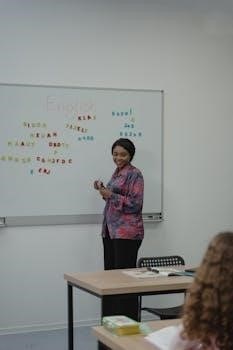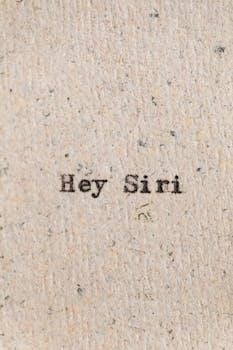noorani qaida pdf in english
The Noorani Qaida serves as a foundational tool for English-speaking individuals seeking to learn Quranic recitation. It systematically introduces Arabic script, focusing on correct pronunciation and Tajweed rules, essential for reading the Quran accurately. This method is designed for beginners.
What is Noorani Qaida?
The Noorani Qaida is a fundamental booklet designed to teach beginners how to read the Quran with proper pronunciation and Tajweed. It’s a crucial stepping stone for those who are new to reading the Arabic script. This booklet simplifies learning by breaking down complex rules into manageable steps. It starts with the basic Arabic alphabets and progresses to combining these letters to form words. The Noorani Qaida emphasizes correct articulation of each letter, which is vital for accurate Quranic recitation. It is used by kids, adults and seniors. It’s a method that ensures a solid foundation in reading the Quran.

Key Features of Noorani Qaida in English PDF
The English PDF of Noorani Qaida provides clear instructions, making it accessible to non-Arabic speakers. It includes Tajweed rules explained in English, ensuring accurate Quranic recitation. It is beginner-friendly.
English Instructions and Guidance
The Noorani Qaida in English PDF offers comprehensive instructions, tailored for learners who do not speak Arabic. These guidelines clarify the pronunciation of each letter, emphasizing the correct articulation points and distinguishing between similar sounding letters. Furthermore, the instructions address the identification of dots on different letters, a crucial aspect for accurate reading. The text guides students through reading from left to right, top to bottom, and bottom to top, promoting a thorough understanding of the script. Practical exercises are included, focusing on differentiating between bold and light letters, enhancing the overall learning experience. This approach ensures accessibility and clarity for English-speaking beginners.
Tajweed Rules in English
The Noorani Qaida in English PDF incorporates Tajweed rules, explained in a straightforward manner, to facilitate accurate Quranic recitation. It introduces key concepts such as the proper pronunciation of letters with ‘Zabar,’ ‘Zair,’ and ‘Pesh,’ ensuring learners understand the vowel sounds. The guide explains the significance of ‘Sakoon’ and ‘Jazm,’ detailing how these symbols affect pronunciation. Instructions are given to differentiate between similar sounding letters, emphasizing the importance of correct articulation. The rules are presented clearly, making complex concepts accessible to English-speaking beginners, ensuring a solid foundation in Tajweed. This approach aims to enhance learners’ ability to recite the Quran with precision.
Beginner-Friendly Approach
The Noorani Qaida PDF, designed for English speakers, utilizes a beginner-friendly approach, making it accessible to all age groups including kids, adults, and seniors. It begins with the basic Arabic alphabet, presenting letters in an easy-to-understand format. The instructions are simple and clear, focusing on the pronunciation and identification of letters and diacritical marks. The lessons guide learners step by step, ensuring a smooth learning curve, using visual aids and simple explanations. The approach facilitates easy comprehension and retention, building a solid foundation for reading the Quran. The methodology is structured to build confidence and encourages consistent practice among learners with no prior knowledge.

Learning Process with Noorani Qaida PDF
The learning process involves starting with basic Arabic alphabets, focusing on correct pronunciation and identification. It emphasizes practice and repetition to solidify understanding and build confidence in reading the Quranic text.
Basic Arabic Alphabets
The Noorani Qaida begins with a thorough introduction to the Arabic alphabet, which are the building blocks for reading the Quran. Special attention is given to the distinct shapes and forms of each letter, ensuring that learners can easily identify them. This stage is crucial as it lays the foundation for all future learning. The Qaida emphasizes the correct pronunciation of each letter, including both light and bold sounds, as well as proper articulation. It also focuses on the various dots and markings which differentiate letters, highlighting their unique characteristics. Through this, beginners gain a solid understanding of the fundamental components of Arabic writing, paving the way for accurate Quranic recitation.
Pronunciation and Identification
A core component of the Noorani Qaida is the emphasis on correct pronunciation and identification of Arabic letters. This involves distinguishing between similar-sounding letters and understanding the subtle nuances of articulation. The Qaida guides learners on how to pronounce each letter with its proper Makhraj (point of articulation) and Sifaat (characteristics). It pays close attention to the dots and other diacritical marks that differentiate letters, ensuring that learners do not confuse them. Through systematic lessons and drills, students develop the ability to accurately pronounce and identify each letter, which is a critical step in mastering Quranic reading. This focus ensures precise and authentic recitation.
Practice and Repetition
Consistent practice and repetition are vital to mastering the Noorani Qaida. Learners engage in regular drills to reinforce their knowledge of Arabic letters, their pronunciations, and the rules of Tajweed. This involves reading exercises that gradually increase in difficulty, starting with single letters and progressing to words and phrases. Repetition is designed to build muscle memory and improve fluency. By continually practicing, students internalize the correct articulation and identification of letters. This method ensures that the learning process is effective and that the skills gained are retained over time. The goal is to achieve a level of proficiency in Quranic reading through diligent practice.

Availability and Accessibility
The Noorani Qaida in English is readily available, with free PDF downloads widely accessible. Various online resources and platforms offer digital versions, ensuring easy access for learners globally, promoting widespread Quranic literacy.
Free PDF Downloads
Numerous websites provide free PDF versions of the Noorani Qaida in English, making it easily accessible to anyone wishing to learn Quranic recitation. These downloadable files often include clear, concise instructions and are designed to be user-friendly, catering to beginners. The availability of free PDFs democratizes access to this essential resource, allowing individuals to learn at their own pace and convenience. These downloadable materials usually contain all the necessary lessons for learning, thus providing an essential educational resource. The free PDF format enables learners to save and print the material, allowing for both digital and physical learning. With a simple download, individuals gain the ability to start their Quranic learning journey.
Online Resources and Platforms
Beyond downloadable PDFs, various online platforms and resources are available to support learning the Noorani Qaida in English. These platforms offer interactive lessons, audio pronunciations, and visual aids to enhance the learning experience. Many provide structured courses with qualified instructors who can guide learners through the material effectively. Online forums and communities also allow learners to connect, ask questions, and share their progress. Some resources offer mobile apps, making the learning accessible through smartphones and tablets. These platforms often incorporate exercises and quizzes to track progress and identify areas needing additional focus. This availability of resources makes the learning process more engaging and convenient.

Benefits of Using Noorani Qaida in English
Using the Noorani Qaida in English provides a solid base for Quran reading. It improves Tajweed skills, leading to a better understanding of Quranic recitation and correct pronunciation for English speakers.
Foundation for Quran Reading
The Noorani Qaida in English serves as the cornerstone for building a strong foundation in Quran reading. It meticulously introduces the Arabic alphabet, focusing on accurate pronunciation, a crucial element for understanding and reciting the Quran correctly. This foundational approach ensures that learners grasp the basic building blocks of the Arabic language, enabling them to progress confidently. By mastering the lessons within the Noorani Qaida, individuals gain the necessary skills to not only read the Quran but also to comprehend the nuances of its recitation. This initial stage is vital as it sets the stage for more advanced studies in Tajweed and Quranic understanding. The systematic structure of the Qaida ensures a smooth learning curve for beginners.
Improved Tajweed Skills
Using the Noorani Qaida in English significantly enhances Tajweed skills, which are crucial for reciting the Quran with proper articulation and rhythm. The Qaida emphasizes the correct pronunciation of each letter, paying close attention to the points of articulation and the rules of elongation and pausing. This meticulous approach cultivates a deep understanding of Tajweed principles. Through consistent practice with the Noorani Qaida, learners develop the ability to recite the Quran with clarity and precision, adhering to the established rules of Tajweed. This improvement is not just about accuracy; it also enriches the spiritual experience of reciting the Quran, allowing for a more meaningful connection with the sacred text. The Qaida is designed to progressively refine these skills.
Understanding Quranic Recitation
The Noorani Qaida in English facilitates a deeper understanding of Quranic recitation by meticulously breaking down the Arabic script and its phonetic nuances. It goes beyond simple reading; it delves into the science of Tajweed, allowing learners to grasp the rules that govern how the Quran is meant to be recited. This detailed approach equips individuals with the necessary tools to not only read the text but also to comprehend its underlying structure and rhythm. By understanding these elements, learners can appreciate the beauty and depth of the Quranic verses, moving beyond mere pronunciation to truly understanding the art of correct and meaningful recitation. This knowledge fosters a more profound connection with the Quranic text.
